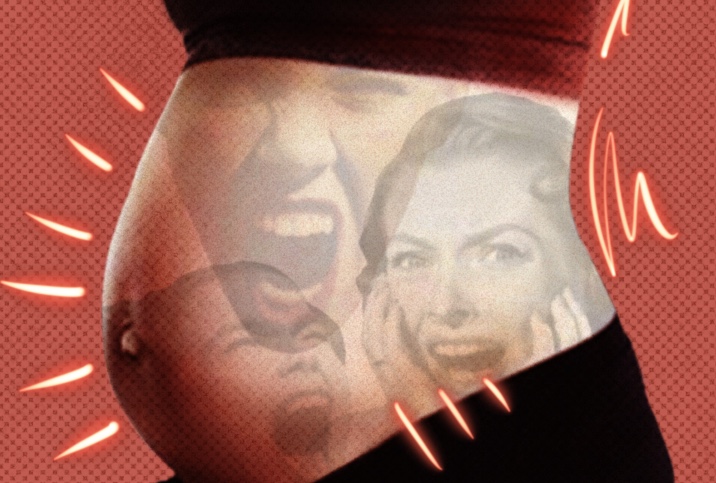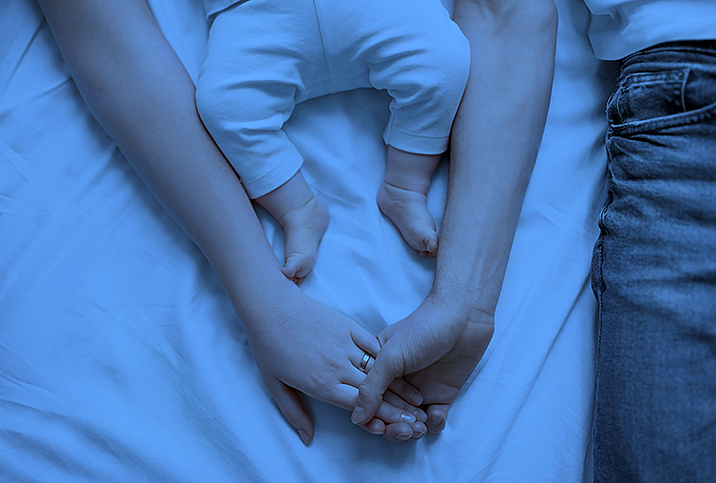What Do Contractions Feel Like?

The thought of contractions can be pretty intimidating if you've never had a baby before. Unfortunately, no one can tell you exactly what your contractions will feel like because every woman's experience is different.
"Uterine contractions are perceived differently by different women, as each mom is unique," confirmed Monte Swarup, M.D., a board-certified OB-GYN and founder of HPD Rx, a health supplement company in Santa Monica, California.
Despite this, there is some general advice about what to expect and how to tell the difference between actual contractions and Braxton Hicks contractions, also known as false labor pains.
How true labor contractions feel
"Labor pains feel like very intense period pains," said Emma Roberts, a degree-level counselor, maternity practitioner and sleep consultant with Dear Mama, a baby sleep and parent well-being company in London. "And I say very intense because I want to prepare women for the fact that it is going to be very painful. I believe this preparation is important as it helps women to realize the intensity in their minds. And I think once they realize that, it doesn't come as such a shock when it happens."
Swarup concurred, saying women may feel pain in their back or pelvis. This pain may be similar to bad menstrual cramps.
"Labor contractions happen in a regular pattern, get closer together over time and are painful; painful enough that a patient cannot finish a sentence through a contraction," Swarup said.
Roberts said the pain can be felt in the back, middle back, lower back, stomach, uterus and pelvis. It can sometimes feel like you need to do a bowel movement because of the pressure on the uterus. In fact, pooping during labor is common.
"It kind of pushes on the bowel as well. So I do explain that to pregnant mums and mums in labor," she said.
Braxton Hicks are false labor contractions that may happen when you are not in labor. They're named after John Braxton Hicks, the first physician to describe the contractions that occur before true labor contractions. So how do you know if it's Braxton Hicks or the real deal?
Active labor vs. Braxton Hicks
According to Swarup, you may experience Braxton Hicks contractions for many weeks before actual labor begins. These "practice" contractions can be painful, and you may think you are in labor. They may be more noticeable at the end of the day.
"Sometimes they do happen at the end of the day or after you've been for a long walk or after any kind of physical activity," Roberts agreed.
The critical difference is Braxton Hicks are not as intense and regular as active labor pains. The location is also different. Roberts explained that Braxton Hicks contractions tend to be localized to one area, usually in your stomach. In contrast, labor pains can move over several regions, as mentioned above. This is very different from the central stomach-based Braxton Hicks contractions.
The other key difference is timing. Labor contractions are regular, but Braxton Hicks are not. Swarup suggested timing your contractions and noting whether they continue when you are resting and drinking water. If rest and hydration make the contractions disappear, they are not true labor contractions.
"Obviously, everyone is different, and some people have Braxton Hicks and it is very intense, but they tend to be not as severe as labor pains, not as regular," Roberts explained.
Braxton Hicks contractions also don't result in cervical change, whereas regular contractions do, added Kecia Gaither, M.D., board-certified in OB-GYN and maternal-fetal medicine, and director of perinatal services at NYC Health + Hospitals/Lincoln in the Bronx in New York City.
"Your physician should educate you on signs and symptoms of labor. If concerns arise, it's best to contact your health provider immediately," Gaither advised.
Other signs of labor
One sign that labor could be around the corner is known as a "bloody show." Now, this doesn't happen to everyone, but it is something to look out for.
"What happens is your cervix sort of weakens, opens, and as it opens, it releases the mucus plug, which is a barrier to stop infection happening," Roberts explained.
It's usually a sticky, jelly-like pink mucus that comes away either in one blob or several pieces. This vaginal discharge contains a small amount of blood, which is why it is pink.
"Sometimes that can happen a few weeks, a few days, a few hours or a few minutes before labor is about to happen. But it's often a sign that labor will happen soon," Roberts said.
Another sign is that your water breaks. Remember, however, this doesn't always mean your baby is coming, especially if your water breaks early.
If your water breaks naturally, it may be a slow trickle or a sudden gush of water you cannot control.
"Some people lose their water up to 10 weeks before the baby's born, and they just have to be monitored for an infection until birth," Roberts explained.
If your water breaks naturally, it may be a slow trickle or a sudden gush of water you cannot control. Regardless of when your water breaks, it's vital to inform your care team.
Some moms feel sick before going into labor.
"I think it's a way of your body getting rid of everything. Sometimes they have a bit of diarrhea as well," Roberts said.
"Nesting" is also common before labor. Some parents like to ensure the house is tidy and organized.
"It's a way of preparing for the baby," Roberts explained.
Swarup stressed that if you think you are in labor, call your OB-GYN. Go to the hospital if:
- Your water has broken without contractions
- Heavy vaginal bleeding begins
- You have severe pain that's constant with no relief between contractions
- Your baby isn't moving as much as usual
- Your water is smelly or colored
Tips to prepare for labor
There are some practical steps you can take to prepare and take some of the stress away from labor if you're having a hospital birth. Swarup suggested:
- Determining the best route to your hospital and how long it takes to get there
- Considering traffic, rush hour and possible delays
- Packing a bag with the items you'll need and putting it in your car
- Planning child care and home needs ahead of time so there is a plan while you're in the hospital
- Having a car seat installed in your vehicle to bring your baby home safely
The one point that Roberts wants women to understand about labor is that it is painful and very intense.
"I feel that the more women are prepared for that, the better they're able to cope, rather than going into labor and it is a big, massive shock," she explained.
Everybody's different, and everybody's experience is different, but the general rule of thumb is labor is going to hurt. That doesn't mean it can't be a joyful experience, though.
"Knowledge is power," Roberts said. "I think the more mums go into it with their eyes open, the more they are prepared and so have the potential tools to cope with labor."




















